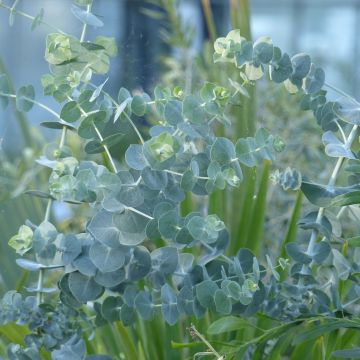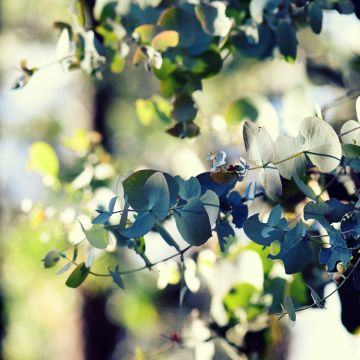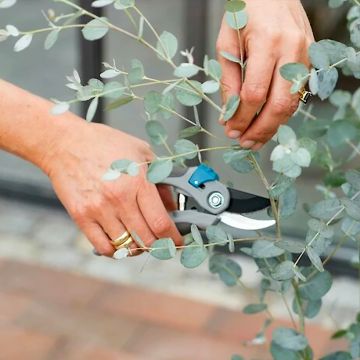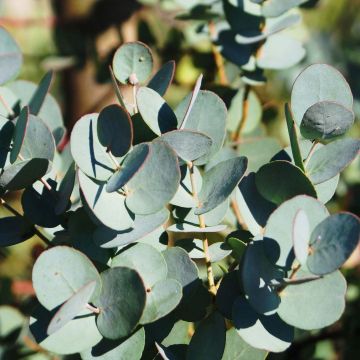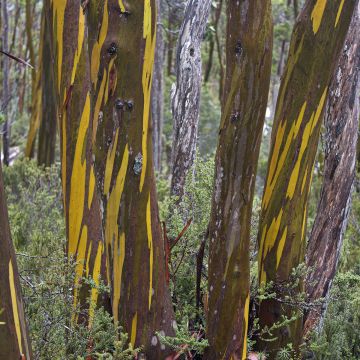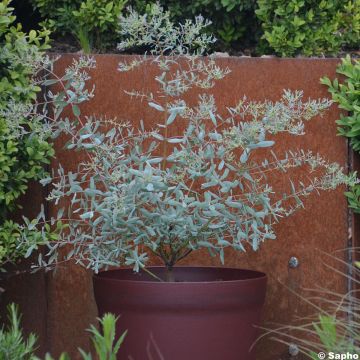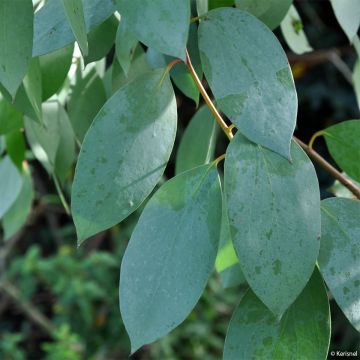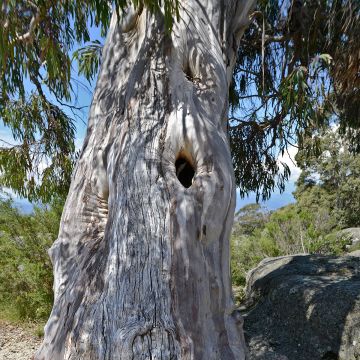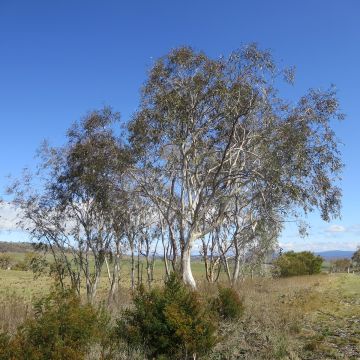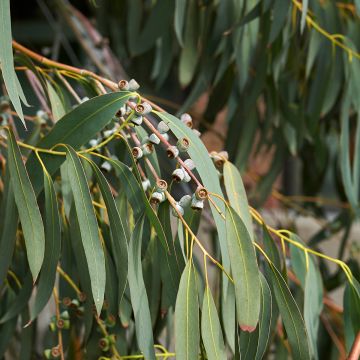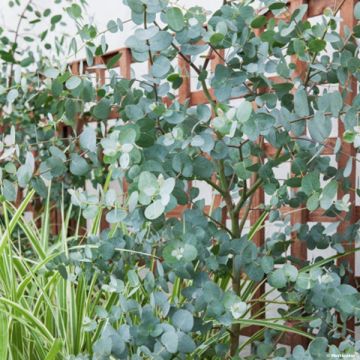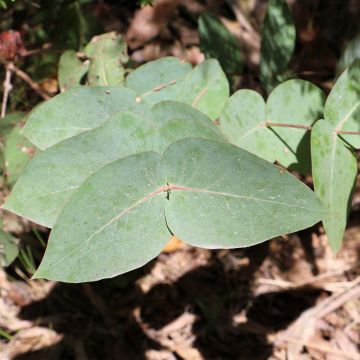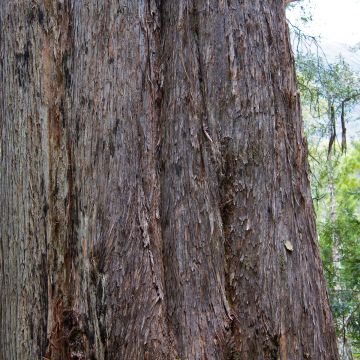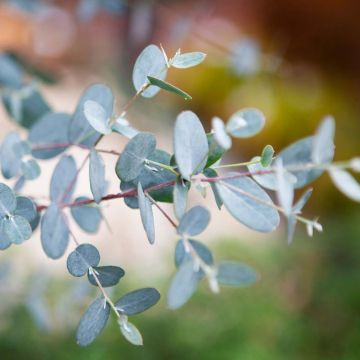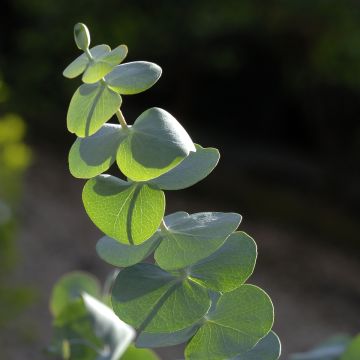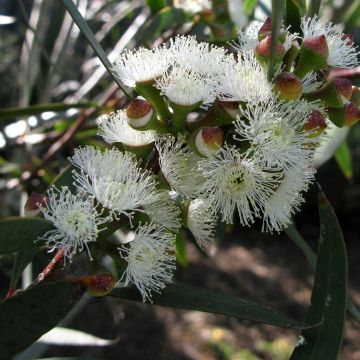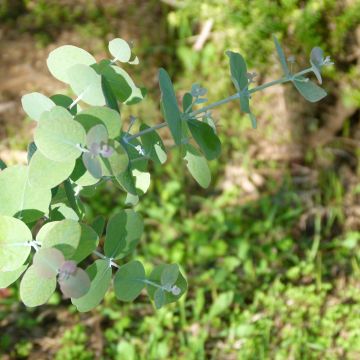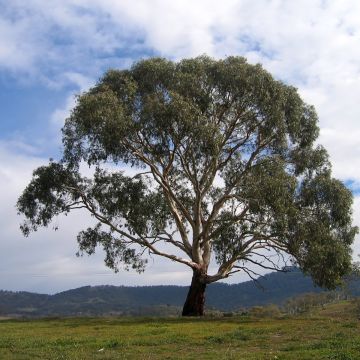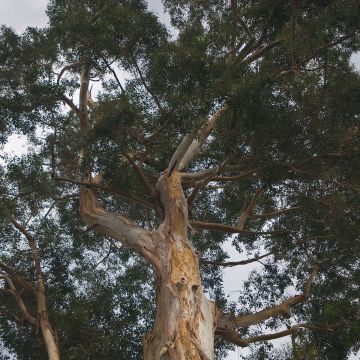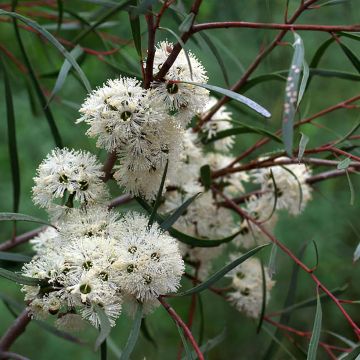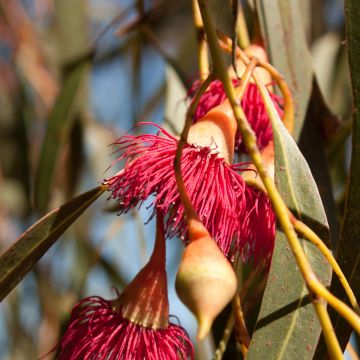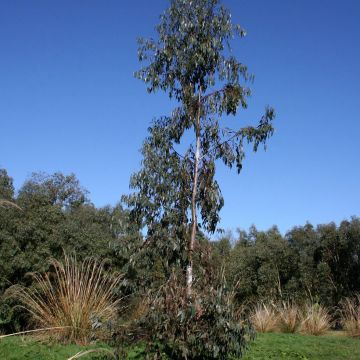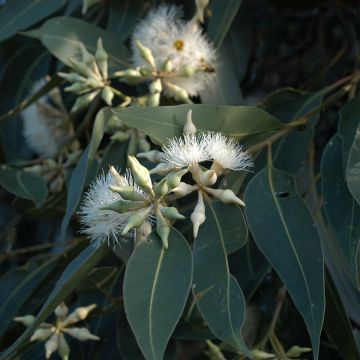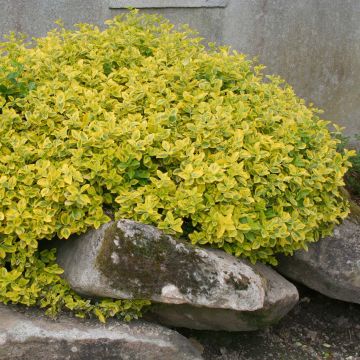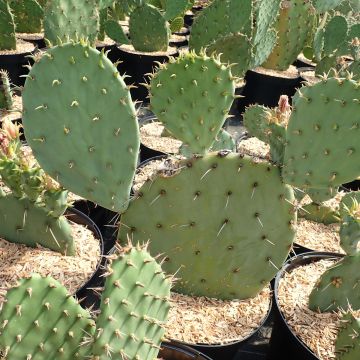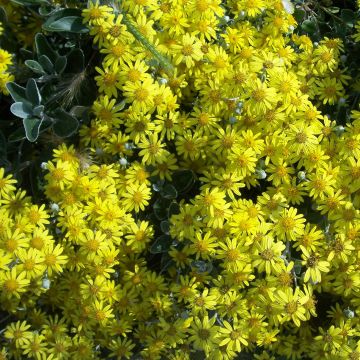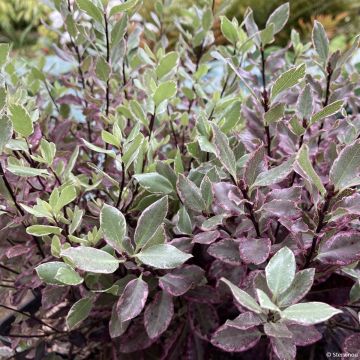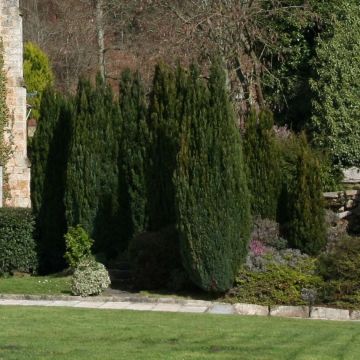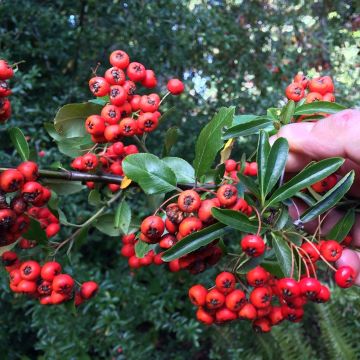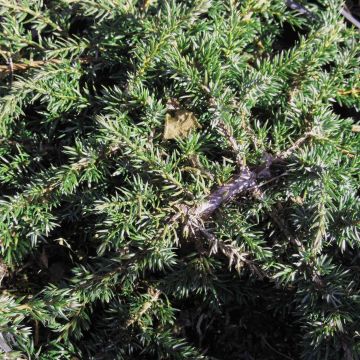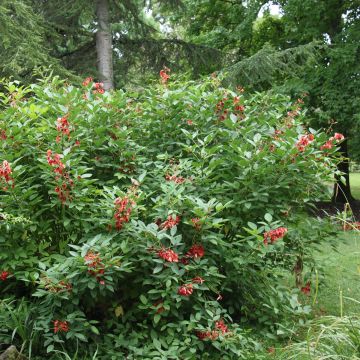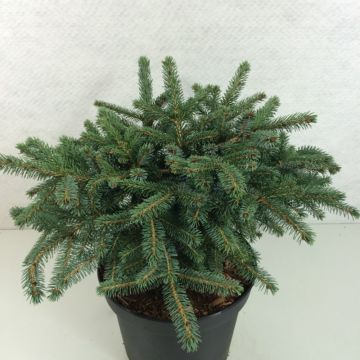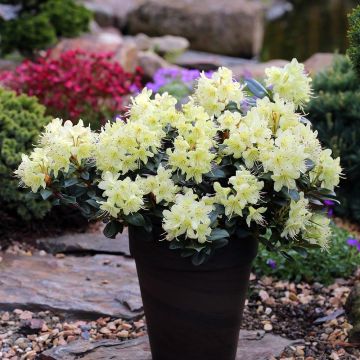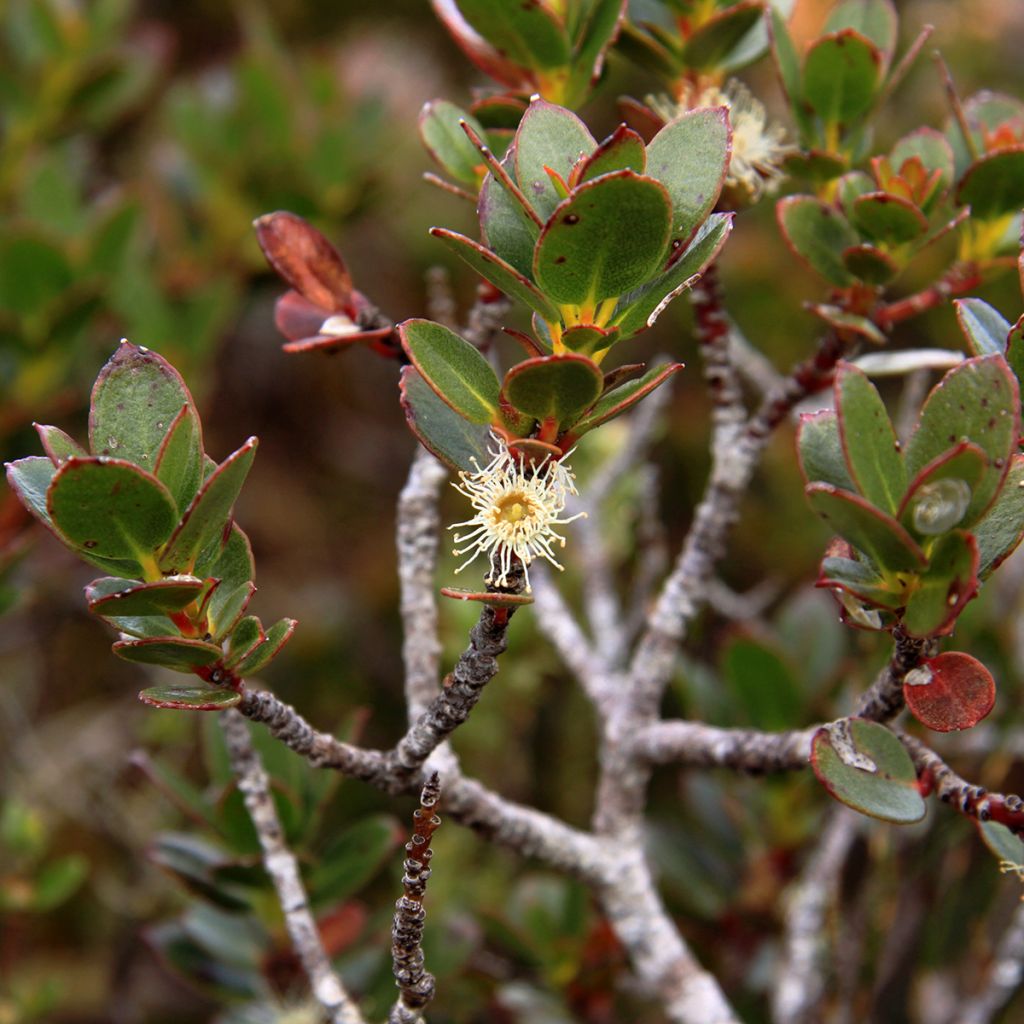

Eucalyptus vernicosa - Varnished Gum
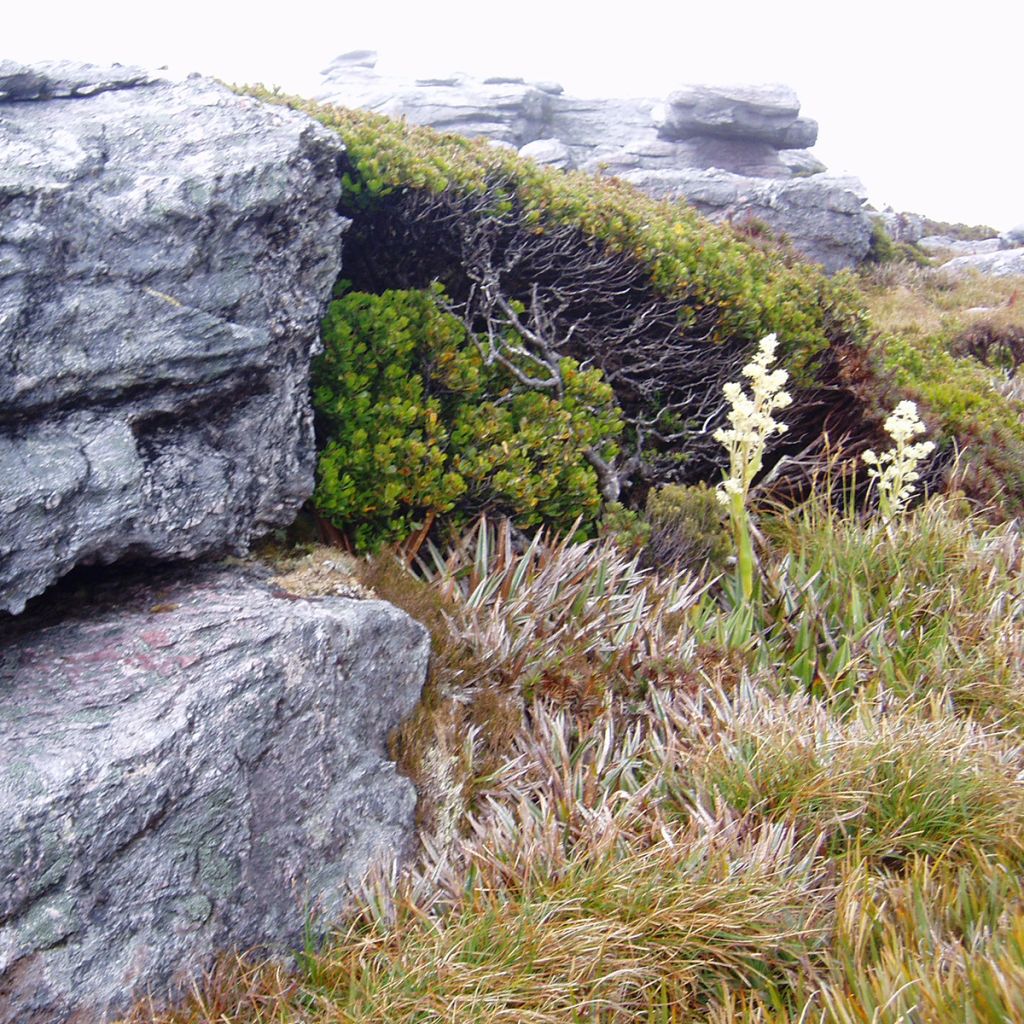

Eucalyptus vernicosa - Varnished Gum
Eucalyptus vernicosa - Varnished Gum
Eucalyptus vernicosa
Varnished Gum
Why not try an alternative variety in stock?
View all →This plant carries a 24 months recovery warranty
More information
We guarantee the quality of our plants for a full growing cycle, and will replace at our expense any plant that fails to recover under normal climatic and planting conditions.
From €5.90 for pickup delivery and €6.90 for home delivery
Express home delivery from €8.90.
Does this plant fit my garden?
Set up your Plantfit profile →
Description
The Eucalyptus vernicosa is a very rare species that displays a particularly graphic habit. In the garden, this small bush usually forms a dome about one metre tall, with relatively regular contours. It can also develop into a narrow tree. Its shiny dark green foliage, made up of small oval leaves, is evergreen. In winter, and almost all year round, it produces solitary cream-white flowers, which are pretty but too small to be truly decorative. Native to the cold and mountainous regions of Tasmania, it can withstand temperatures as low as -18°C, snow for several weeks, and strong winds. It has a very slow growth rate and does not tolerate dry conditions, so it requires a suitable location in the garden, with moist soil and full sun.
Eucalyptus is a large genus of plants, with about 800 species, ranging from shrubs a few metres tall to towering trees over 90 metres tall (such as E. regnans, E. nitens...). They all belong to the Myrtaceae family (like Myrtle or the famous Bottlebrush, or Callistemon), which is well represented in tropical and warm temperate climates.
The Eucalyptus vernicosa is native to cold regions. It is found at altitudes of 700 to 1350 metres in the alpine regions of southwestern Tasmania. It mostly grows in acidic peaty soils, developed on quartzite or sandstone rock. The climate in these areas is particularly rainy (1000 to 2500 mm of annual precipitation) and very harsh in winter, with continuous frost and snow for several months. This explains the high hardiness of this species, capable of enduring temperatures as low as -18°C!
Derived from the Latin word vernicosus, this Eucalyptus is commonly called Varnished Gum or Varnished Gumtree (in French: Gommier verni), referring to the glossy and shiny appearance of the leaves. It is a slow-growing plant that forms a ramified bush with a stunted growth, reaching about 1 metre in all directions. It naturally takes on the shape of a fairly regular dome, which is very graphic and interesting from a landscaping perspective. In its native environment, and under favourable conditions, it can eventually become a small tree 3 to 4 metres tall, with a relatively narrow habit, over a period of 20 to 30 years. This species belongs to the group of mallees, an Aboriginal term that refers to several genera, including Eucalyptus, characterised by a height of less than 10 metres and a bushy habit with multiple axes emerging from ground level. These plants have the ability to develop a lignotuber, an underground formation from which numerous buds emerge. These buds regenerate into branches when the aboveground part of the plant is destroyed by fire or grazed by animals. This characteristic is interesting from an ornamental standpoint, as the bush can be cut back to limit its growth or forced to branch lower.
The stems have a smooth bark that is grey or grey-brown in colour. The juvenile leaves have a beautiful dark green colour and are truly glossy and shiny. Small, measuring a maximum of 2 cm long and 1.5 cm wide, they are oval or elliptical, usually sessile (without a petiole), and positioned opposite each other on the branches. In contrast, the adult leaves are alternate, borne on petioles 0.1 to 0.8 cm long, also oval or elliptical, and sometimes orbicular. The flowering occurs in the middle of the juvenile foliage, with small flowers measuring 1 to 2 cm in diameter. These flowers consist of protruding cream-white stamens surrounding a slightly yellowish centre. The main flowering period is from December to April and can extend beyond for a good part of the year. However, the flowers are too small and too few to be truly ornamental.
Eucalyptus vernicosa will interest collectors and enthusiasts of rare plants. It will also allow gardeners in cold regions to enjoy a small pleasure without the fear of their Eucalyptus dying in the first winter. It will fit well in an alpine rockery, in a sunny location, provided there is enough moisture available. To create a themed scene, you can plant perennial flowers such as the Alpine Blue Thistle (Eryngium alpinum Blue Star), which produces beautiful flowers with sophisticated patterns in June and July, in a stunning steel blue colour. A few clumps of Silene acaulis, or Moss Campion, will create a beautiful persistent green carpet that will be covered with charming little pink flowers in summer. Earlier in spring, the Gentiana acaulis, or Gentian, will offer its incredible blue trumpets as early as May to complete this scene.
Report an error about the product description
Eucalyptus vernicosa - Varnished Gum in pictures


Plant habit
Flowering
Foliage
Botanical data
Eucalyptus
vernicosa
Myrtaceae
Varnished Gum
Australia
Other Eucalyptus
Planting and care
Eucalyptus vernicosa is best planted in early spring in cold and humid regions, and in early autumn in drier and warmer climates, to take advantage of winter rains. Plant it in well-prepared soil, not too dry but moist, in a very sunny location. Clayey or loamy soils, even limestone, are well tolerated, but not dry soils, as this plant needs moisture. A well-established specimen is hardy down to -18°C in these conditions and is not at all afraid of snow. Young plants are more sensitive to severe frosts, especially if the frost lasts for several days and the soil is moist. In most regions, you will plant it in open ground, possibly improving drainage with coarse sand, pumice or non-limestone gravel.
For the first two years, regular watering is necessary, then the bush can do without watering in summer once well established, except during excessively dry periods that may require some additional water. Fertilisation is not recommended, as this plant prefers poor soils. Pruning is not necessary, and even discouraged, to allow the unique habit of this superb eucalyptus to express itself. However, it is well tolerated after flowering or in late summer. It is perfectly possible to train the eucalyptus to have a single trunk by selecting the best one and cutting all others to the ground. And it is also possible to coppice this small tree to form a large bush and limit its height.
Gum trees are useful for drying out wet areas, as they are heavy water consumers even in winter. However, they become quite resistant to drought once well established (to varying degrees depending on the species and varieties).
It is the young plants that take root most easily in open ground. The deep root system of Eucalyptus does not like to be disturbed. Choose its permanent location carefully.
Montane species are interesting for their hardiness, but they fear heatwaves and excessively dry soils.
Planting period
Intended location
Care
This item has not been reviewed yet - be the first to leave a review about it.
Evergreen shrubs
Haven't found what you were looking for?
Hardiness is the lowest winter temperature a plant can endure without suffering serious damage or even dying. However, hardiness is affected by location (a sheltered area, such as a patio), protection (winter cover) and soil type (hardiness is improved by well-drained soil).

Photo Sharing Terms & Conditions
In order to encourage gardeners to interact and share their experiences, Promesse de fleurs offers various media enabling content to be uploaded onto its Site - in particular via the ‘Photo sharing’ module.
The User agrees to refrain from:
- Posting any content that is illegal, prejudicial, insulting, racist, inciteful to hatred, revisionist, contrary to public decency, that infringes on privacy or on the privacy rights of third parties, in particular the publicity rights of persons and goods, intellectual property rights, or the right to privacy.
- Submitting content on behalf of a third party;
- Impersonate the identity of a third party and/or publish any personal information about a third party;
In general, the User undertakes to refrain from any unethical behaviour.
All Content (in particular text, comments, files, images, photos, videos, creative works, etc.), which may be subject to property or intellectual property rights, image or other private rights, shall remain the property of the User, subject to the limited rights granted by the terms of the licence granted by Promesse de fleurs as stated below. Users are at liberty to publish or not to publish such Content on the Site, notably via the ‘Photo Sharing’ facility, and accept that this Content shall be made public and freely accessible, notably on the Internet.
Users further acknowledge, undertake to have ,and guarantee that they hold all necessary rights and permissions to publish such material on the Site, in particular with regard to the legislation in force pertaining to any privacy, property, intellectual property, image, or contractual rights, or rights of any other nature. By publishing such Content on the Site, Users acknowledge accepting full liability as publishers of the Content within the meaning of the law, and grant Promesse de fleurs, free of charge, an inclusive, worldwide licence for the said Content for the entire duration of its publication, including all reproduction, representation, up/downloading, displaying, performing, transmission, and storage rights.
Users also grant permission for their name to be linked to the Content and accept that this link may not always be made available.
By engaging in posting material, Users consent to their Content becoming automatically accessible on the Internet, in particular on other sites and/or blogs and/or web pages of the Promesse de fleurs site, including in particular social pages and the Promesse de fleurs catalogue.
Users may secure the removal of entrusted content free of charge by issuing a simple request via our contact form.
The flowering period indicated on our website applies to countries and regions located in USDA zone 8 (France, the United Kingdom, Ireland, the Netherlands, etc.)
It will vary according to where you live:
- In zones 9 to 10 (Italy, Spain, Greece, etc.), flowering will occur about 2 to 4 weeks earlier.
- In zones 6 to 7 (Germany, Poland, Slovenia, and lower mountainous regions), flowering will be delayed by 2 to 3 weeks.
- In zone 5 (Central Europe, Scandinavia), blooming will be delayed by 3 to 5 weeks.
In temperate climates, pruning of spring-flowering shrubs (forsythia, spireas, etc.) should be done just after flowering.
Pruning of summer-flowering shrubs (Indian Lilac, Perovskia, etc.) can be done in winter or spring.
In cold regions as well as with frost-sensitive plants, avoid pruning too early when severe frosts may still occur.
The planting period indicated on our website applies to countries and regions located in USDA zone 8 (France, United Kingdom, Ireland, Netherlands).
It will vary according to where you live:
- In Mediterranean zones (Marseille, Madrid, Milan, etc.), autumn and winter are the best planting periods.
- In continental zones (Strasbourg, Munich, Vienna, etc.), delay planting by 2 to 3 weeks in spring and bring it forward by 2 to 4 weeks in autumn.
- In mountainous regions (the Alps, Pyrenees, Carpathians, etc.), it is best to plant in late spring (May-June) or late summer (August-September).
The harvesting period indicated on our website applies to countries and regions in USDA zone 8 (France, England, Ireland, the Netherlands).
In colder areas (Scandinavia, Poland, Austria...) fruit and vegetable harvests are likely to be delayed by 3-4 weeks.
In warmer areas (Italy, Spain, Greece, etc.), harvesting will probably take place earlier, depending on weather conditions.
The sowing periods indicated on our website apply to countries and regions within USDA Zone 8 (France, UK, Ireland, Netherlands).
In colder areas (Scandinavia, Poland, Austria...), delay any outdoor sowing by 3-4 weeks, or sow under glass.
In warmer climes (Italy, Spain, Greece, etc.), bring outdoor sowing forward by a few weeks.

































